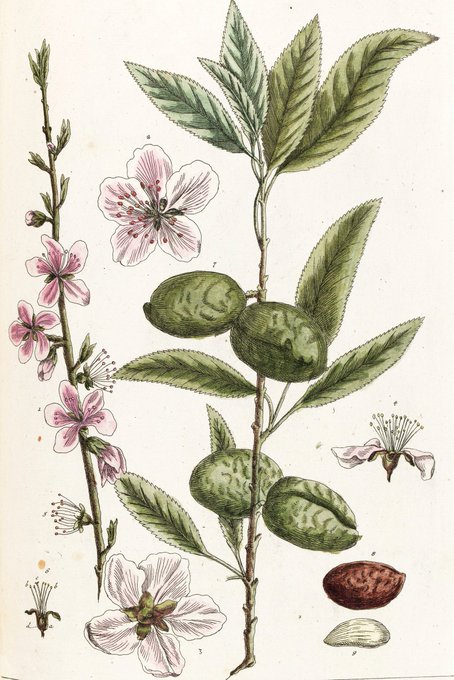Gingerbread is a #Christmas favourite, made using the aromatic, pungent and spicy rhizome (sideways-growing stem) of Zingiber officinale. Ginger has been grown at the Botanic Garden since the late 1780s. Discover more in this #Plants400 article: https://t.co/au8kuuRQKH
Theobroma cacao is the Latin name of one of the world's favourite plants and one that helps produce a food that we indulge a lot in during the festive season... chocolate!
The literal translation of Theobroma is 'Food of the Gods’.
Cloves are the dried, unopened, immature flower buds of the aromatic evergreen tree Syzygium aromaticum. The flavour of this popular Christmassy spice is concentrated in oil glands found in many parts of the plant, especially the flower buds. #Plants400
https://t.co/qkGulPPCql
Did you know…? Bitter almonds contain cyanide, which is probably part of the almond’s defence against predators. Consuming a handful of bitter almonds is likely to be fatal to an adult human (sweet almonds only contain a trace of cyanide). https://t.co/0dnmxEqfOO
#Plants400
The genus Cucurbita contains the ultimate #Halloween vegetable, the #pumpkin, along with squashes, courgettes & marrows. The fruits have a high diversity of shapes & colours, from green to orange & even shades of blue with warty protuberances. Learn more: https://t.co/85Envb2D1A







